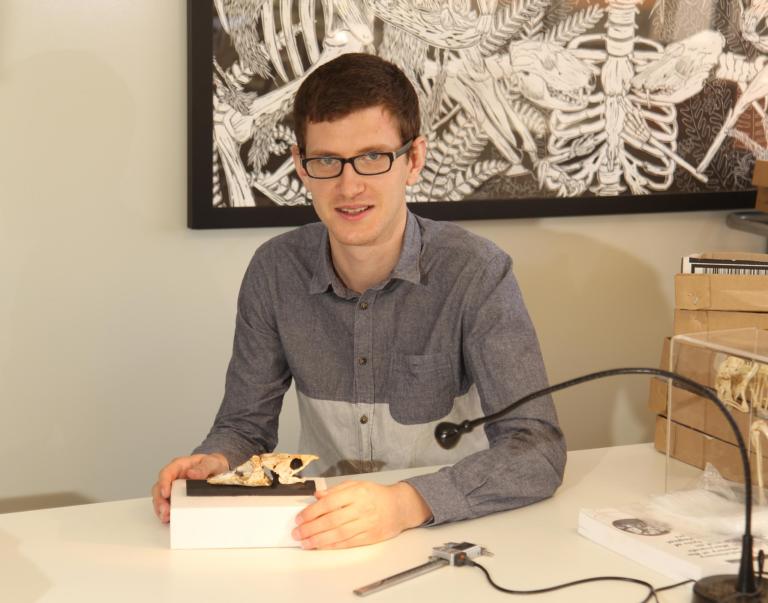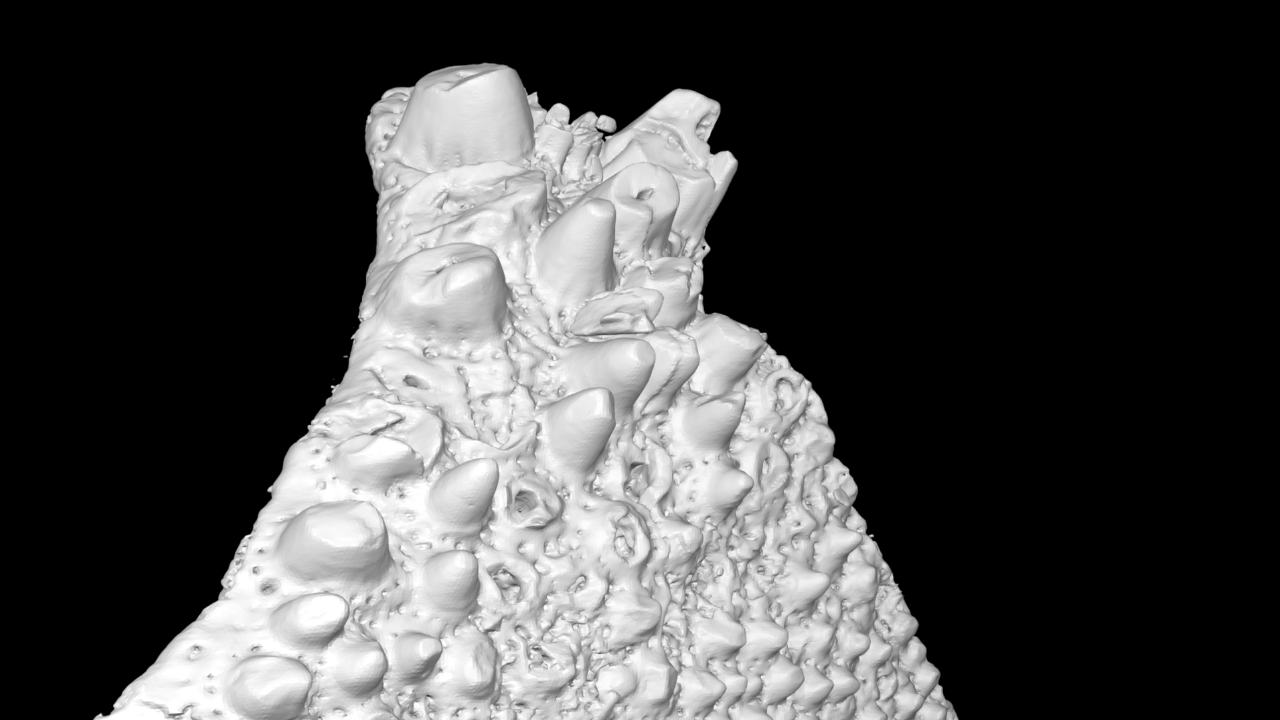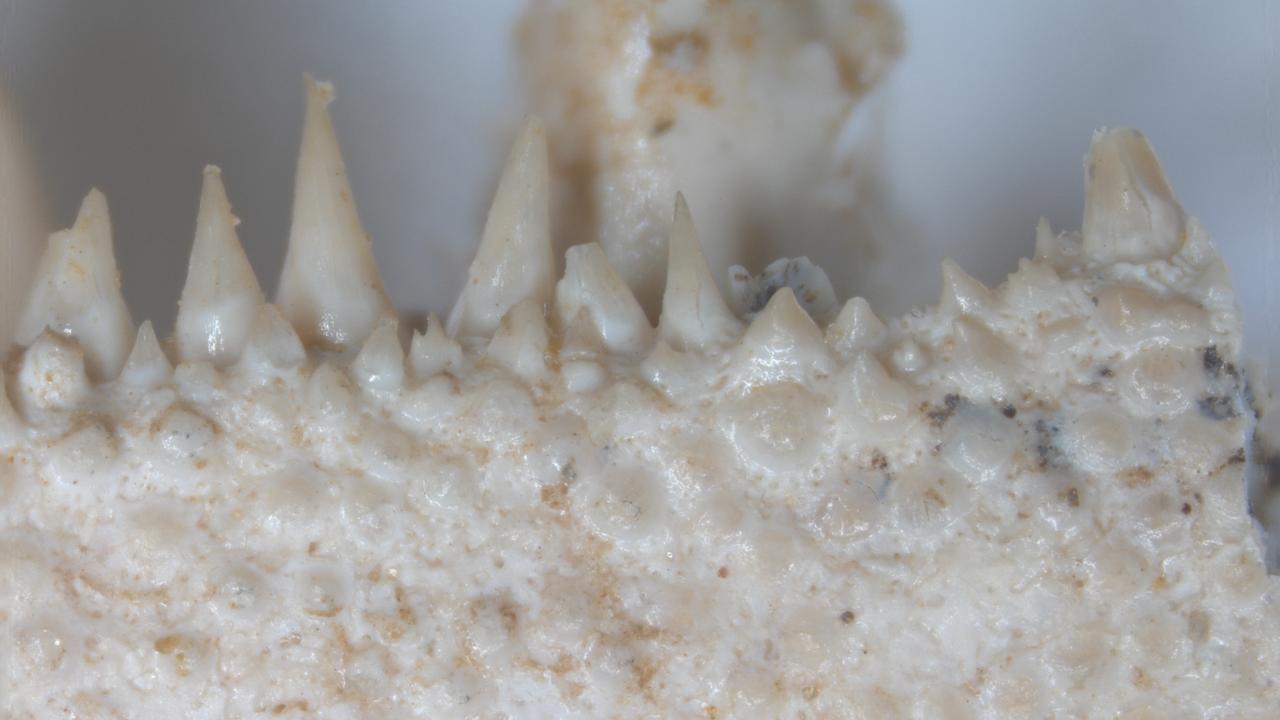
I am a postdoctoral researcher working with Martin Rücklin. My research at Naturalis primarily involves the early evolution of vertebrates, in particular focusing on teeth and jaws. Previously, my PhD was on sensory systems in early vertebrate fossils. I have also dabbled in phylogenetics, the evolution of viviparity in lizards and snakes, methods of ancestral state reconstruction and the developmental evolution of the insect renal system.
Keywords
Fossils, vertebrates, CT scans, phylogenetics, evolution
Researchinterest
My postdoctoral research involves investigating the assembly of the vertebrate dentition. This is achieved mainly through the use of CT scans including synchrotron microtomography.
The use of CT scans allows us to see hidden details inside fossils. In particular, the use of synchrotrons, which provide powerful X-ray beams, produces scans with a resolution of less than 0.001 miilimetres. This is providing new insights into the structure and development of teeth in early vertebrates. In addition, I study the relationships of early vertebrates, producing evolutionary trees. These trees of relationships can then be used to study the evolution of key aspects of the jaws and teeth in vertebrates. On the way I study the methods themselves, in order to find out which approaches are most suitable.
Currenttopics
- Tooth development in early crown osteichthyans
- Neurocranial anatomy of the placoderm Nefudina
- Reconstruction of the ancestral tooth type
- The role of fossils and stratigraphic age in the reconstruction of phylogeny
- Methods for assessing character support in a Bayesian phylogenetic analysis
- New methods for Bayesian tip-dated analysis of morphological characters
- Dynamic homology of morphological characters
Keypublications
- King, B.*, Young, G.C.* and Long, J.A. (2018). New information on Brindabellaspis stensioi, Young, 1980, highlights morphological disparity in Early Devonian placoderms. Royal Society Open Science 5:180094.
- King, B., Hu, Y. and Long, J.A. (2018). Electroreception in early vertebrates: survey, evidence and new information. Palaeontology 61(3):325–358.
- Clement A.M.*, King, B.*, Giles, S.*, Choo, B., Ahlberg, P.E., Young, G.C. and Long, J.A. (2018). Neurocranial anatomy of an enigmatic Early Devonian fish sheds light on early osteichthyan evolution. eLife 7:e34349.
- King, B., Qiao, T., Lee, M.S.Y., Zhu, M. and Long J.A. (2017). Bayesian morphological clock methods resurrect placoderm monophyly and reveal rapid early evolution in jawed vertebrates. Systematic Biology 66(4):599–516.
- King, B. and Lee M.S.Y. (2015). Epoch based likelihood models reveal no evidence for accelerated evolution of viviparity in squamate reptiles in response to Cenozoic climate change. Journal of Experimental Zoology B 324(6):525–31.
- King, B. and Lee M.S.Y. (2015) Ancestral state reconstruction, rate heterogeneity and the evolution of reptile viviparity. Systematic Biology 64(3):532–544.
-
King, B. and Denholm, B. (2014). Malpighian tubule development in the red flour beetle (Tribolium castaneum). Arthropod Structure and Development 43:605–613.
*denotes equal contribution
Studentsupervision
Naturalis aims to be a breeding ground for international scientific talent. Therefore, students have a special position in our organisation.
Current students
Frank Senden (3rd Year Bachelors student)

Teachingactivities
Guest lecturer Methods in Biodiversity Analysis masters course.
In themedia
Bizarre 'platypus fish' fossil covered in The Guardian, the Sydney Morning Herald and Newsweek.
Several popular science articles in The Conversation
